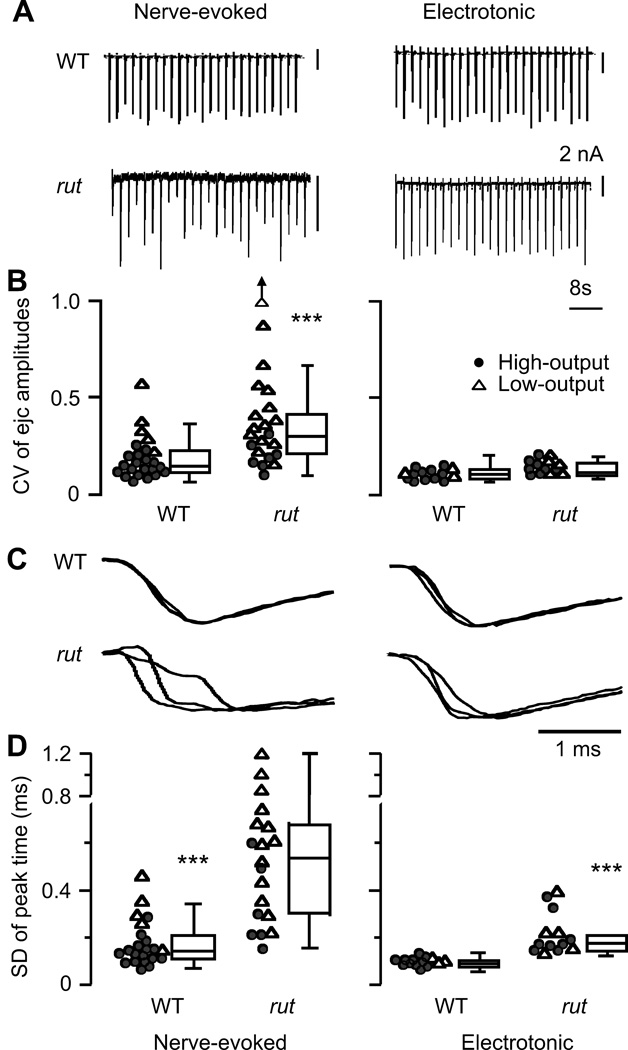Figure 4.
Improved amplitude stability and temporal precision of transmission in rut terminals by electrotonic stimulation. A. Stability of ejc amplitude during repetitive nerve and electorotonic stimulation in WT and rut terminals. B. Coefficient of variation (CV) of ejc amplitude, showing greater instability of rut ejcs than WT ejcs (p < 0.001, ttest). In addition, CVs for low-output terminals (△) were higher than high-output terminals (●) in both WT and rut (p < 0.001). Such differences were absent in electrotonically induced ejcs (p > 0.05), indicating a role of TTX-sensitive action potential invasion in transmission stability. An outlier beyond the scale is indicated by an arrow. C. Representative traces showing altered temporal precision of transmitter release during repetitive stimulation in rut. Ejcs in three successive trials were normalized for time course comparison. D. SD of time to ejc peak as an indicator for temporal precision of release. SD of nerve evoked ejcs is bigger in rut than that in WT (p < 0.001, t-test). Note that temporal precision was improved by direct electrotonic activation of release, indicating a role of nerve terminal excitability. However, even with electrotonic stimulation, some asynchronicity persisted in rut ejcs (WT < rut, p < 0.001, t-test), suggesting an impaired vesicle release mechanism. Data from all high- and low-output samples examined are presented in box plots. In scatter plots, ● and △ represents data from high- and low-output terminals, respectively. For clarity, some of the scatter plots include representative data points selected according to the rank order: one out of every 5 data points for CV of both WT and rut nerve-evoked ejcs; every 4 and 2 for SD of nerve-evoked WT and rut ejcs; every 2 for electrotonically induced WT ejcs.

